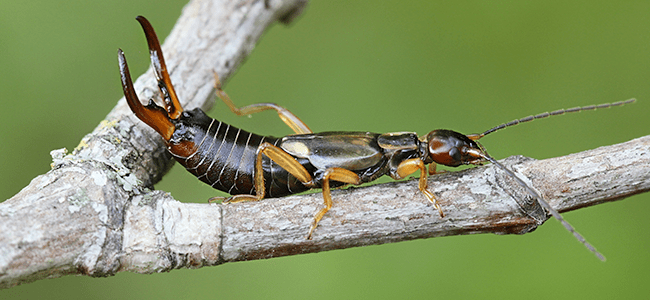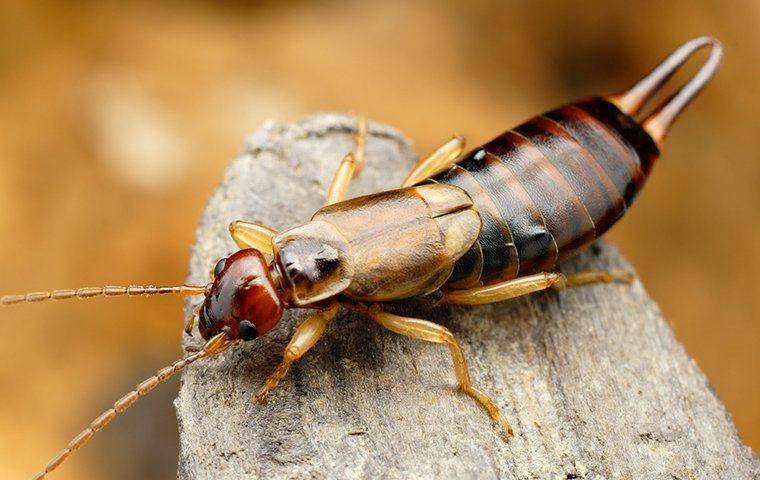Table Of Content

See what attracts earwigs and how you can help prevent them from coming back to your home. Having pests in the home can be frustrating and getting rid of earwigs in the home can be challenging. The common name "earwig" originated from the old superstition that these insects enter people´s ears and feed there; however, this belief has no merit in science.
How to Get Rid of Earwigs
Earwigs not as bad as most people believe - Seacoastonline.com
Earwigs not as bad as most people believe.
Posted: Wed, 12 Oct 2011 07:00:00 GMT [source]
Use a dehumidifier in the basement to help remove excess moisture, and repair any leaky faucets both inside and out. Earwigs come into our homes seeking food or to escape the weather. You will usually find them in places where there is water, like the kitchen, bathroom, laundry room, or in cool, damp places like basements and crawl spaces. The good news is earwig infestations inside your home are very rare. To kill earwigs you find inside your home use Ortho® Home Defense Max® Indoor Insect Barrier with Extended Reach Comfort Wand®, following label directions. Earwigs, or pincher bugs, can be a nuisance but it is possible to get rid of them.
Can earwigs pinch you?
This article is an earwig identification guide to help recognize these annoying creatures. Description and picture of the slender brown insects will help to identify them as they scurry across the floor. Additionally, learning about their life cycle and habitat in yards will help you take steps to control the pincher bugs. In addition to not crawling into peoples’ ears at night, earwigs also do not spread diseases.
What do earwigs eat?
Squashing them will release a foul stench that may last a while. This is because you rarely see them as they are nocturnal creatures. Sometimes, you may detect their musky scent but have difficulty finding where they are lurking. Here are some handy tips on eradicating pincher bugs from your home. Earwigs are easily identifiable due to their slender reddish-brown to dark brown, flattened bodies.
However, the pinching action of an earwig is typically not painful and is barely noticeable. On the other hand, pincher bugs use the mouthpart to bite into plant tissue and feed on tiny insects. Earwigs are omnivorous insects and feed on decaying vegetation, plant leaves, and small invertebrates.
Bug off: Montreal faces earwig invasion this summer - Montreal Gazette
Bug off: Montreal faces earwig invasion this summer.
Posted: Sun, 30 Jul 2023 07:00:00 GMT [source]
They’re big fans of decaying organic matter and love dark, moist places — both of which they can usually get fairly easily outside. And that’s exactly where we want them, because their diet helps support a healthy ecosystem. When the conditions are right though, they’ll slip through cracks and crevices and that’s when you find earwigs in house. If there are enough of them, they can cause damage to your houseplants, eat your fruit and leave some ick behind.
During the day, most earwig species tend to seek out cold, wet areas that are left undisturbed, such as small, moist crevices. When feeding at night, these insects prefer decaying vegetation and plant items found beneath mulch or wet leaves. Additionally, certain types of earwigs will target seedlings, potentially rendering crops and garden plants unproductive due to the damage caused by these insects. Some earwig species will also prey on smaller arthropods and insects.
Another option is to use a dish soap and water solution and spray areas where earwigs hang out. A solution of water and white distilled vinegar is another scent that earwigs do not like and effectively cleans. When earwigs want to escape the cold or need a wet spot to remain comfortable, they might turn to your home for that haven.

In the back is their abdomen, where all of their blood and circulatory systems are maintained. Protruding from the abdomen is a distinct set of pincers which are used to defend themselves from predators or attack prey. The male’s pincers (left) are more rounded and fierce looking, with the female’s pincers (right) more long and narrow. These pinchers are how they get their nickname, the “pincher bug“.
The yellow-brown liquid they excrete when disturbed has a distinguishably foul odor as well. If you take the following steps to prevent earwigs from entering your home, you will also avoid infestations of other nasty bugs. Researchers at the Utah State University advise that DE becomes ineffective when it’s damp. So, you will need to reapply it after it rains and the soil dries. Earwigs are normally outside insects and rarely infest a home in large numbers.
Finding large numbers grouped together a part of a family or true infestation is unlikely. That said, it is possible to find a handful or even dozens in one location if it is one that replicates their ideal environment. While at first a baby earwig might not look exactly like their adult counterparts, the general shape is still quite similar and distinguishable. Typically, lighter in color, nymphs will grow into their darker, more hardened adult body type in a matter of days.

Boric acid is a natural insecticide you can use to kill earwigs and other nuisance bugs. All you need to do is sprinkle the white powder wherever you think earwigs have been active. For example, apply it along baseboards, under furniture, or in crawl spaces. Female earwigs typically lay between 30 and 50 eggs in burrows during the spring but actual numbers depend on species. Unlike other insects, a female earwig will tend to her eggs until they hatch.
Equally effective (and even easier) is a tuna-can trap—if you eat tuna packed in oil, that is. Remove the fish but leave the oily remains, then bury the can so that its top is flush with the soil. A newspaper, magazine, or supermarket flyer is a cozy hiding place for an earwig. Simply roll an old periodical into a tube, securing it with a piece of tape or rubber band if necessary, and place it in your garden before you retire for the evening. Dampen the newspaper with your hose or watering can to create a particularly tempting trap.
Before handling boric acid, always wear protective gloves, follow instructions, and never use it around children or pets. Contrary to its name, earwigs are really known as pincher bugs (and have nothing to do with our ears!). This is due to their two long pincers protruding at the end of their body, which makes this a distinct pest. Specific problem areas can benefit from dehumidifiers and vapor barriers. During the day, they bide their time in dark, damp areas; they love to lounge under leaves, firewood, mulch, or other organic material.


No comments:
Post a Comment